This is an updated version of the author’s 2021 What’s an Abortion, Anyway? with slightly revised text, new images, and a section of resources and discussion questions.
Carly Kol, a queer, full-spectrum doula, offers children of picture-book age a simple, thoughtful, and gender-inclusive look at what it means to have an abortion. When someone gets pregnant, it tells us, different things can happen. They could have a baby; they could have a miscarriage (“when a pregnancy isn’t healthy enough to keep growing”); or they could have an abortion (“when someone decides to stop growing their pregnancy”). Abortions can be done in different ways, too: via a doctor who does a “special procedure” (not further explained) or via medicine the pregnant person takes.
Kol explains that people may have abortions for different reasons: they like their family as is, they can’t take care of a baby right now, or a pregnancy could risk their own health. Notably, the book also discusses that people may have many different emotions—happy, sad, calm, lonely, or a combination—before, during, and after an abortion. Some will want to talk about it; others won’t. Regardless, they all deserve “love and respect.” The book repeatedly stresses that having an abortion is a decision each person should make for themselves, and concludes, “We can never really know what it is like to be someone else.”
The text does not (except in A Note from the Creators intended for adults) really touch on any of the political debates around abortion, although it does note: “Sometimes people can decide how they want to have an abortion, and sometimes they can’t. It might depend on where they live or how big their pregnancy has grown. No matter how people have an abortion, everyone deserves to do it when and where they want.” It also doesn’t go into the fact that although abortion is safe when done properly, it can be very unsafe when a person is forced to have one from a disreputable provider because it has been made illegal. That feels like an appropriate approach for the age group; adults who feel their child has a need to know these other aspects can go into them as desired, using this book as a launching point.
Additionally, the book does explore how pregnancy happens in the first place (which is fine; I appreciate its focus), and recommends some additional titles, including Cory Silverberg and Fiona Smyth’s What Makes a Baby? (which I love) and Rachel Greener’s Making a Baby (which I have a few concerns with).
This volume is a recommended addition to any collection of titles about gender/bodies/sex-ed for younger children.
Images throughout, by queer parent and full-spectrum doula Emulsify, are of people diverse in racial/ethnic and gender identities.










